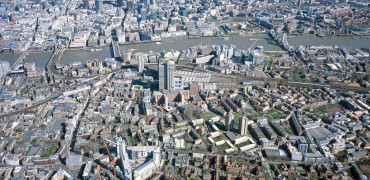If you are connected with air conditioning in any way, whether an installer, building operator, corporation, consultant or facilities manager, then the buzz word of the moment that you should be aware of is R32.
R32 is a new refrigerant used inside an air conditioning system which everyone will start to hear more of soon.
It’s important because this new refrigerant has much less global warming potential (GWP) than the current refrigerant of choice – R410A. R32 refrigerant still ensures that our buildings can be comfortable places to work and live, whilst consuming even less energy and in the most environmentally-friendly ways possible.
If R32 or even R410A mean little to you at the moment then don’t worry because we have prepared a special CPD-Accredited guide to give you all the facts you need to know about what is called the European F-Gas Regulations.
The main point though is that whilst this change is inevitable, it does also bring additional benefits through increased levels of efficiency and lower carbon emissions.
R32 air conditioning systems are therefore better for both the internal environment of a building and the external environment in general.
New equipment should therefore in the main be the same size and fit into the same spaces as existing equipment that it will replace.
Modern air conditioning systems have relied on refrigerant for decades and this is how they manage to transfer heat from one place to another so efficiently. An air conditioning unit uses what is known as the vapour compression cycle to compress and expand the ‘refrigerant’ to produce and release energy.
Air conditioning can use heat taken from one room, such as a kitchen, gym or server room, and transfer it to another area or purpose, such as heating hotel bedrooms, offices or even to produce hot water for the building.
Various refrigerants are more efficient than others.
In 2015 refrigerants such as R22 (an HCFC), that had a big impact on the ozone layer were phased out and banned.
This led the industry to move to R410A (HFC)refrigerant, which along with technological advances increased efficiency over R22 systems. However, R410A has a global warming potential of 2088, which means that if released into the atmosphere, it could cause more than 2,088 times more warming potential than an equivalent of CO2.
The new refrigerant R32 has a GWP of 675, making it far less of a threat to global warming.
Oh and one other thing, although I have stated ‘new’ refrigerant a few times in this article, R32 air conditioning has already been installed in millions of buildings and systems in Japan over the past two – three years, so it is very tried and tested.
The other good news is that manufacturers are aware that change can be difficult for organisations and businesses, especially those that seek consistency of style, décor and operation across a network of buildings, such as High Street retailers or a nationwide hotel chain.
New equipment should therefore in the main be the same size and fit into the same spaces as existing equipment that it will replace.
We’ve created a dedicated website to explain all of the issues around R32 including short informative videos and infographics. You can also download a free, CPD-Accredited Guide to the F-Gas Regulations which govern refrigerants and is the driver behind this new refrigerant.
Sharon Oliver is Marketing Manager for Mitsubishi Electric Living Environment Systems.
If you have any questions about this article or want to know more, please email us. We will contact the author and will get back to you as soon as we can.


